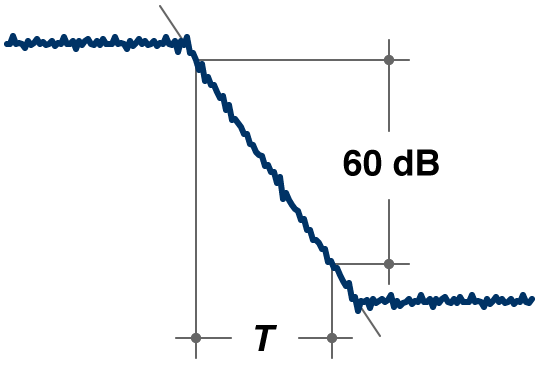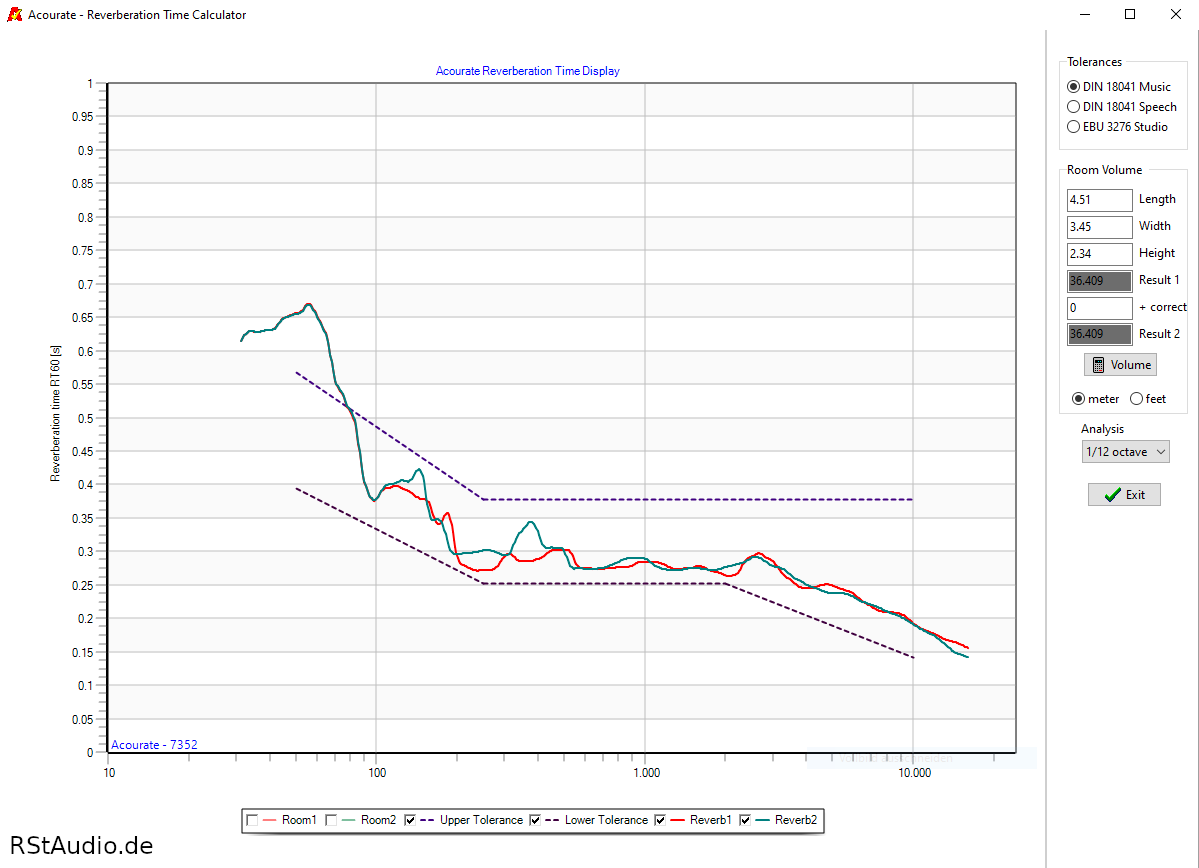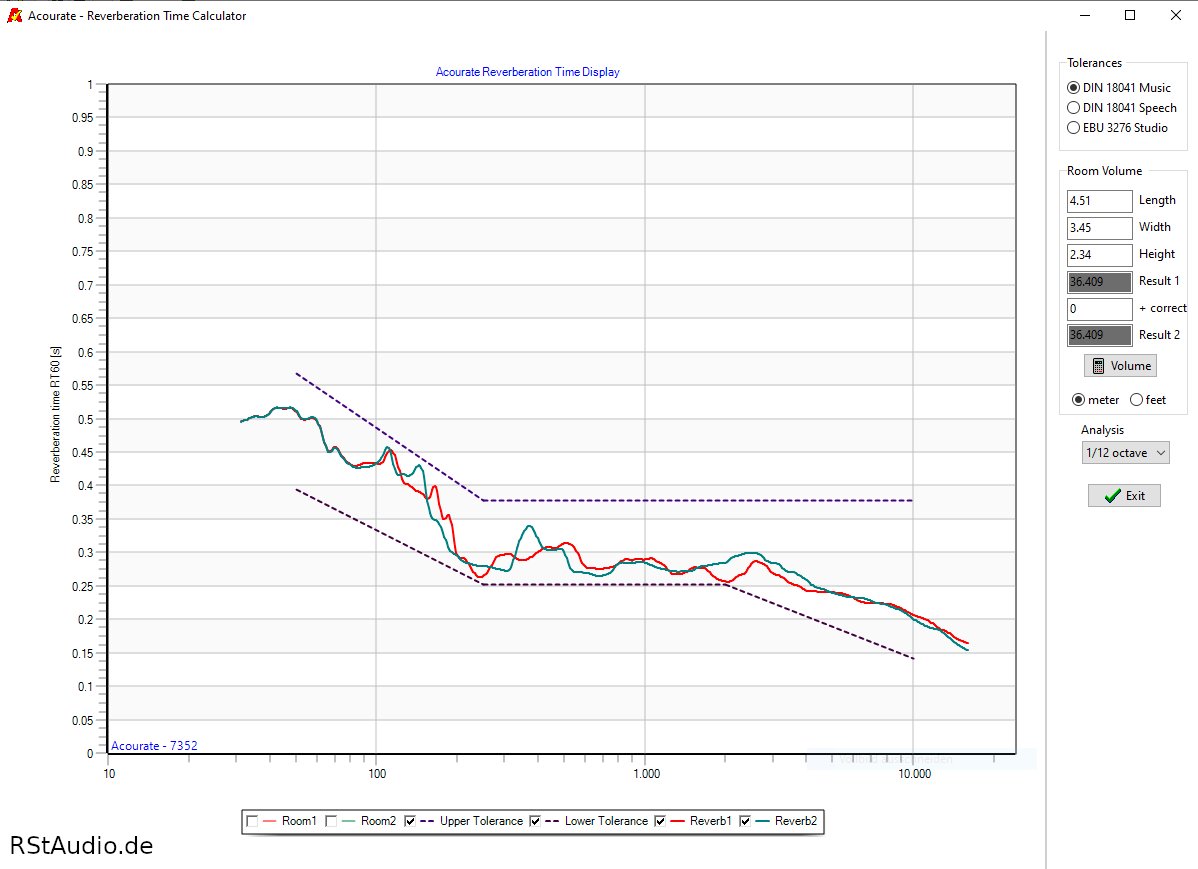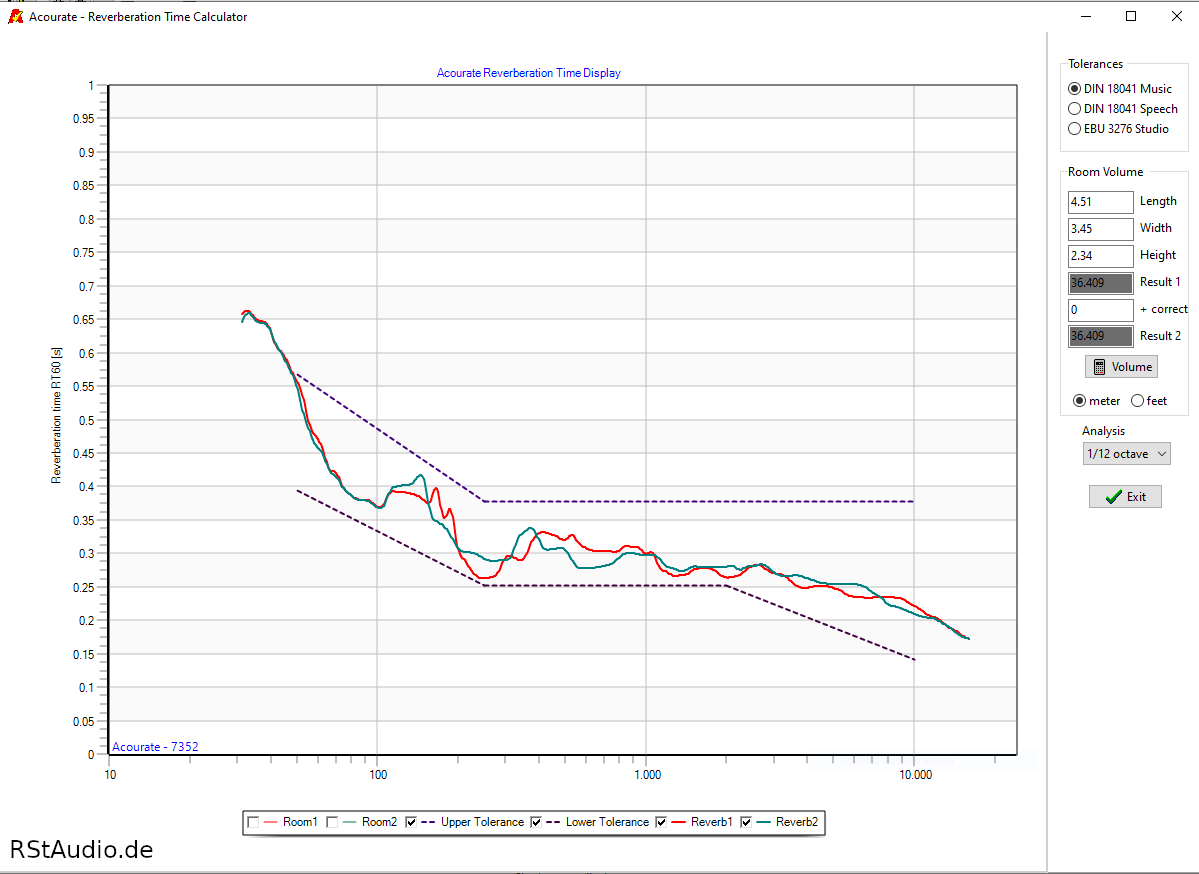
15 June 2024
The most important physical parameter for characterising the acoustic properties of a room is its reverberation time. It is the measure of the amount of echo in a room. The reverberation time depends on the frequency, as stone, wood, carpet or textiles absorb sound to different degrees at different frequencies.
The reverberation time is the time interval within which the sound pressure in a room drops to a fixed fraction of its initial value when the sound source suddenly stops (reverberation). In most cases, one thousandth is used as a fraction, which corresponds to a decrease in the sound pressure level of 60 dB. The corresponding reverberation time is then referred to as T60 or simply T, usually as reverberation time (RT). It is one of the best-known key figures in room acoustics.
German Wikipedia
Music is produced in the recording studio for a “standardised” room situation. This is based on a reverberation in the listening room specified in the DIN. The closer the reverberation in the listening room corresponds to the reverberation specified in the DIN, the more accurately the music heard corresponds to that mixed by the sound engineer in the studio. Depending on the size or volume of the listening room, the reverberation specified by DIN varies.
Acourate Wiki

We measure the reverberation time RT60 with Acourate. The reverberation time is determined from the measurement of the room’s pulse response.
An Example of Improving the Reverberation Time
31 August 2021
During one of the countless room acoustic measurements at my home, we noticed that the door to my listening room has a significant influence on the reverberation time in the room. I would like to describe here how we minimised this influence. At the beginning, of course, there is always a measurement.
The picture above shows the initial situation. At the top right, “DIN 18041 Music” is selected as the measurement tolerance. Below that, we see the dimensions of my listening room. The two dashed lines are formed from these parameters. Ideally, the reverberation time curves for both channels now run within these two limits.
You can see very nicely how the reverberation time rises below approx. 100Hz and leaves the interval at approx. 80Hz, i.e. becomes too large. The measurements also clearly show that I am using a mono subwoofer. Below 125Hz, the crossover frequency, the curves for the left and right audio channels overlap.
As a first step, I stuck a sealing tape with a rubber profile from window construction on the top and on the side of the lock in the rebate of the door. This made the door close so tightly that it could no longer move in the lock.
The result is impressive. Now the reverberation time is already behaving quite nicely. Obviously, the door has moved in the lock, stimulated by the bass impulses in the room. This is very well prevented by the modification. Incidentally, this is a change that is not noticeable and can therefore also be made in a living room without any problems.
However, I don’t leave it at that. I have my own listening room, so I don’t have to take the famous WAF (Wife Acceptance Factor) into account. I also covered the door on the side of the listening room with heavy foil from the automotive industry.
The heavy foil actually brings a further improvement, even if not as significant as with the first step. However, we are talking about high-end audio here, so I am grateful for even the smallest positive change.
Up to this point, I made all measurements without the active absorber, as I wanted to assess the behaviour of the door itself. In the next measurement we see the behaviour with the absorber switched on.
You can see very clearly how the situation has worsened. Obviously, the absorber is now working with an incorrect setting that has a negative effect on the reverberation time.
But this is easy to explain, the heavy foil shifted the resonance frequency of the door significantly downwards and this must of course be taken into account in the settings of the absorber.
A slight adjustment of the frequency response in the DSP of the absorber electronics solved the problem. The reverberation time in my room is now within the specified limits over the entire frequency range. In addition, the situation improved further through the use of the active absorber, from about 50Hz we have a fairly constant reverberation time of 0.4s up to the crossover frequency. A result that is not only satisfying from a measurement point of view. As I wrote elsewhere, I now have a bass reproduction in my listening room that I would never have thought possible.
Addendum
In August 2021 I changed my measurement setup and now only measure via the Lynx Aurora(n). This was possible because I extended the converter with an additional card with microphone inputs. Of course, the measurement signals also pass through the Dante network, so I measured with 96kHz/24bit. Apart from that, there were no changes.

Measurement with the Lynx Aurora(n)
You can see very clearly from the measurement result above what influence a non-optimal measurement chain has on the measuring result.
If you compare the two diagrams above with each other, you can see that the RT60 curves for both measurements are around 0.3s from approx. 250Hz upwards. So you can say that the measured values are about the same.
Below this frequency, however, there are major differences in the result. It is most obvious below approx. 50Hz. With the old measurement setup, the reverberation time rises sharply, but in the measurement with the Lynx the value remains below 0.4s.
I attribute the differences to the rather simple microphone preamplifier I used before. Here, the microphone input of the Lynx performs considerably better.




